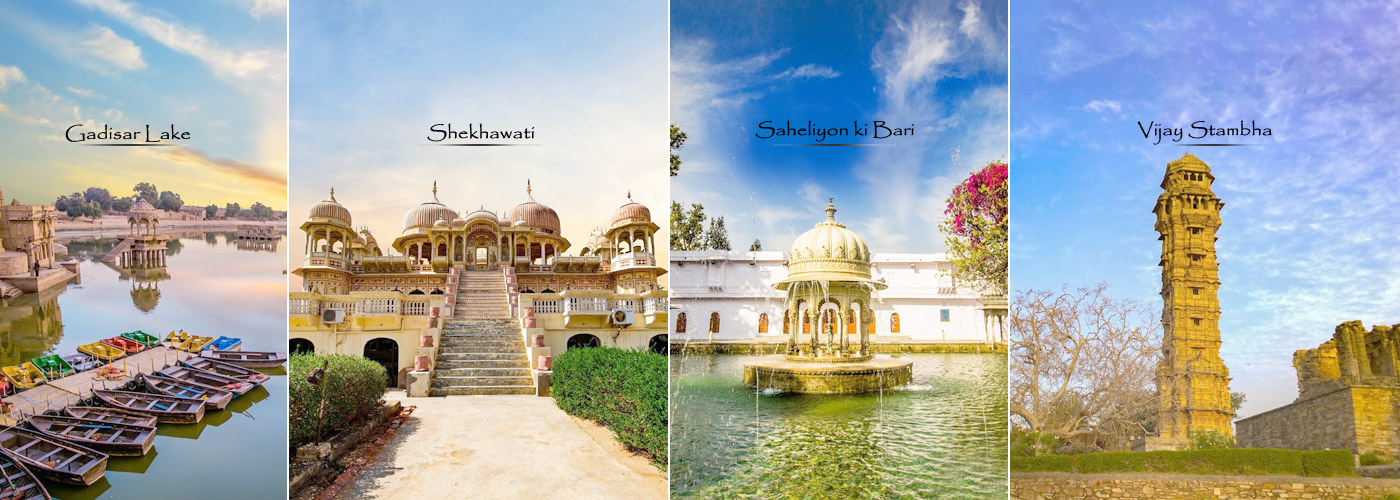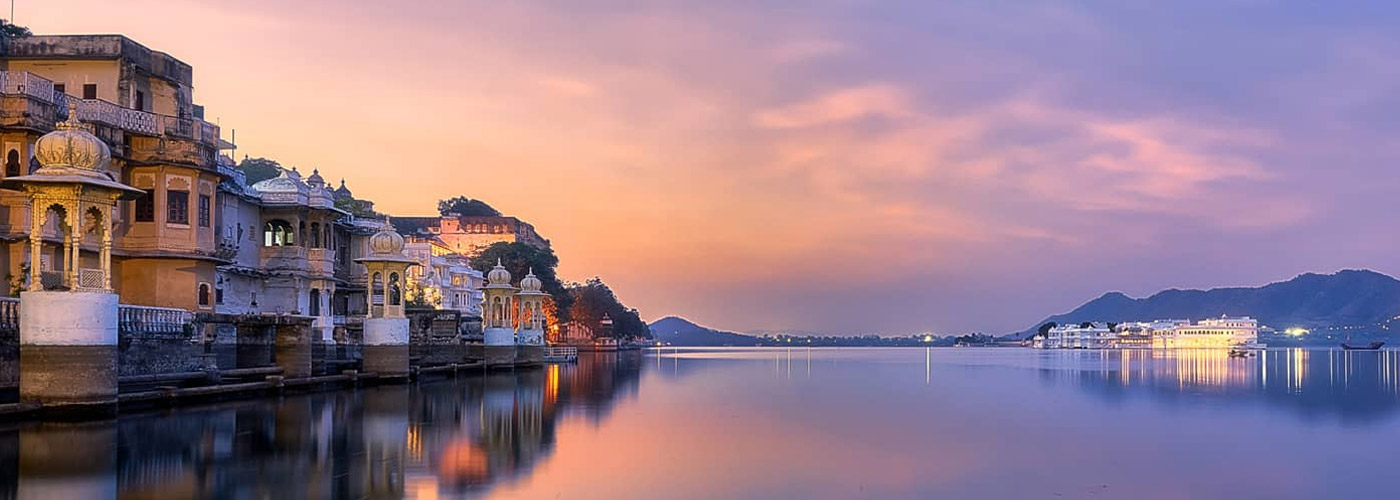Ajmer B2B Travel Company
Ajmer B2B Travel Company is bustling city, located 130 km southwest of Jaipur and just 14 km from the pilgrimage town of Pushkar. The city of Ajmer gets its name from “Ajay Meru”, which can be roughly translated as “invincible hill”. Home to a number of tourist places, Ajmer can be a perfect representation of the diversity of the Indian culture and ethics, and displays a perfect blend of religion, community, culture, etc., coexisting and flourishing in harmony.
Ajmer remains a popular tourist attraction, in addition to being a pilgrimage centre for both Hindus and Muslims. The final resting place of the Sufi Saint, Khwaja Moinuddin Hasan Chisti, is visited by Muslims from all over the world; in fact, the Dargah is revered equally by both Hindus and Muslims. The city is surrounded by the expansive lake of Ana Sagar and the rugged hills of Aravalli. Although Ajmer Sharif Dargah, the shrine of Khwaja Muin-ud-din Chishti, remains as the most famous tourist places to visit in Ajmer, the city is also significantly known for the Jain religion and is home to an amazing golden Jain Temple. Ajmer is also a well-known learning centre. The Mayo College was one of India’s first schools that acted as the stepping stone for the British style of education and is now one of the popular places to visit in Ajmer.
History of Ajmer
The city was founded by Raja Ajaypal Chauhan in the 7th century AD and the city remained as the epicentre of the Chauhan Dynasty till the 12th century AD. The Chauhan dynasty was responsible for the construction of the first hill fort of India, Taragarh, another must visit places in Ajmer. After the defeat of Prithviraj Chauhan by Mohammed Ghori, Ajmer become home to a number of dynasties. The Mughal Sultans particularly liked Ajmer due the presence of the holy Ajmer Sharif Dargah, the most popular tourist place in the city. Ajmer has a rich history and played host to the first meeting between the Mughal King Jahangir and the Ambassador of the Court of King James 1 of England, Sir Thomas Roe in 1616. The city was officially handed over to the British a few centuries later, making Ajmer the only region in Rajputana to be directly controlled by the British East India Company.
Ajmer Sharif Dargah
The Ajmer Sharif Dargah is a shrine dedicated to the Sufi mystic Moinuddin Chisti, an inspirational figure in South Asia who contributed to the spread of Islam there. Millions of devotees visit the dargah to seek blessings from the saint and connect to their spiritual selves. An example of rich Mughal architecture, the shrine was constructed with white marble and has a Persian inscription running along its length. Massive silver gates lead to the inner courtyard, where the marble and gold-plated tomb of the saint sits.
Ana Sagar Lake
Situated in the heart of the city, the Ana Sagar Lake dates back to the 12th century and is one of the most beautiful artificial lakes in Rajasthan. With several temples, gardens, and pavilions along its banks – including the Daulat Bagh Gardens and the Khobra Behroon temple – you can spend hours walking here. Take a boat across the lake and soak up the sights. Since the lake dries up in summer, we recommend visiting between October and March.
Taragarh Fort
Located atop a steep hill, the Taragarh Fort was built in the 14th century by the Chauhan dynasty, who used to rule parts of present-day Rajasthan. It’s comprised of huge battlements and ramparts, tunnels, three massive gateways embellished with stone carvings of elephants, and a palace adorned with murals and stained-glass windows. Unfortunately, some of the structures have fallen into ruin, but the fort still remains one of the city’s prime attractions for its heritage status and fine architecture. Visitors can also enjoy sweeping views of the city.
Adhai Din Ka Jhonpra
Built in 1199 CE by the order of Qutub ud-Din Aybak (the first ruler of the Delhi Sultanate), the Adhai Din Ka Jhonpra is one of the oldest mosques in the country. Literally meaning ‘a shed of two-and-a-half days’, many tales surround the mosque’s unique name. According to one version, a part of the mosque was built in just two-and-a-half days, while the Archaeological Survey of India states that the name originated from the two-and-a-half-day fair held on the grounds of the mosque back in ancient times. An example of Indo-Islamic architecture, the mosque features calligraphic inscriptions, arched screens, heavily decorated pillars and ruined minarets. Before being converted into a mosque, the site used to be a Sanskrit college building with a temple dedicated to Hindu goddess Saraswati.
Ajmer Jain Temple
Also known as Soniji Ki Nasiya, the Ajmer Jain temple was established in the late 19th century and is dedicated to the first Jain tirthankara (saviour and spiritual teacher of the righteous path). It’s a must-visit place for its religious significance and spectacular Jain-style architecture. The main chamber of the temple is called Swarna Nagari, or the ‘City of Gold’, and houses some of the most exquisite gold-plated wooden figures and carvings from Jain mythology. Although only Jains are allowed to enter the temple, the museum is open to everyone.
Nareli Jain Temple
One of the most famous temples in the city, the Nareli Jain Temple is dedicated to the first tirthankara of the Jain religion, Lord Adinath, and is located on the outskirts of Ajmer, 7km from the city centre. Situated in the Aravalli Mountains, the site holds a further 23 miniature temples of other tirthankaras. The major attraction of this temple is its unique architecture, which is an amalgamation of traditional and contemporary styles. The nearest railway station is Ajmer Junction.
Best Time to Visit
The best time visit Ajmer is between October and February. The weather remains very pleasant during this time. The daytime temperature during this time encourages visits to various tourist places to see in Ajmer. The summer months, from March to May, are best to be avoided, as the temperature can easily cross 40° C, which is not conducive for visiting places of attractions in Ajmer.
One can contact the tourist offices and book a suitable Ajmer tour package to fully enjoy the various tourist places in Ajmer. Most Ajmer tour packages will include conveyance and accommodation.
How To Reach
Located almost at the centre of Rajasthan, Ajmer is quite easily accessible.
By Air:
The closest airport to Ajmer is the Jaipur International Airport located at a distance of 132 kilometres from Ajmer. This airport is well connected to all the major cities in the country with frequent flights. There are a number of transport services from the Jaipur airport to Ajmer. The newly constructed Kishangarh Airport, much closer to Ajmer will be functional by July, 2017 with daily flights to the Capital city of New Delhi and other major cities.
By Rail:
Ajmer is connected to the rest of the country via rail. It is an important junction for trains to the cities of Jodhpur, Alwar, Jaipur, Udaipur, Indore, Delhi, Ahmedabad, Mumbai, Hyderabad, Bangalore and even Jammu.
By Road:
The city is located on the Golden Quadrilateral National Highway 8 which connects the national capital New Delhi to the financial capital, Mumbai. This connects Ajmer to numerous cities in the country in all directions. It is also well connected to the major cities of Rajasthan by the Ajmer-Jaipur Expressway. Located at around 135 kilometres from Jaipur and at around 400 kilometres from Delhi, Ajmer has bus services from Delhi, Jaipur, Udaipur, Kota and other cities.


